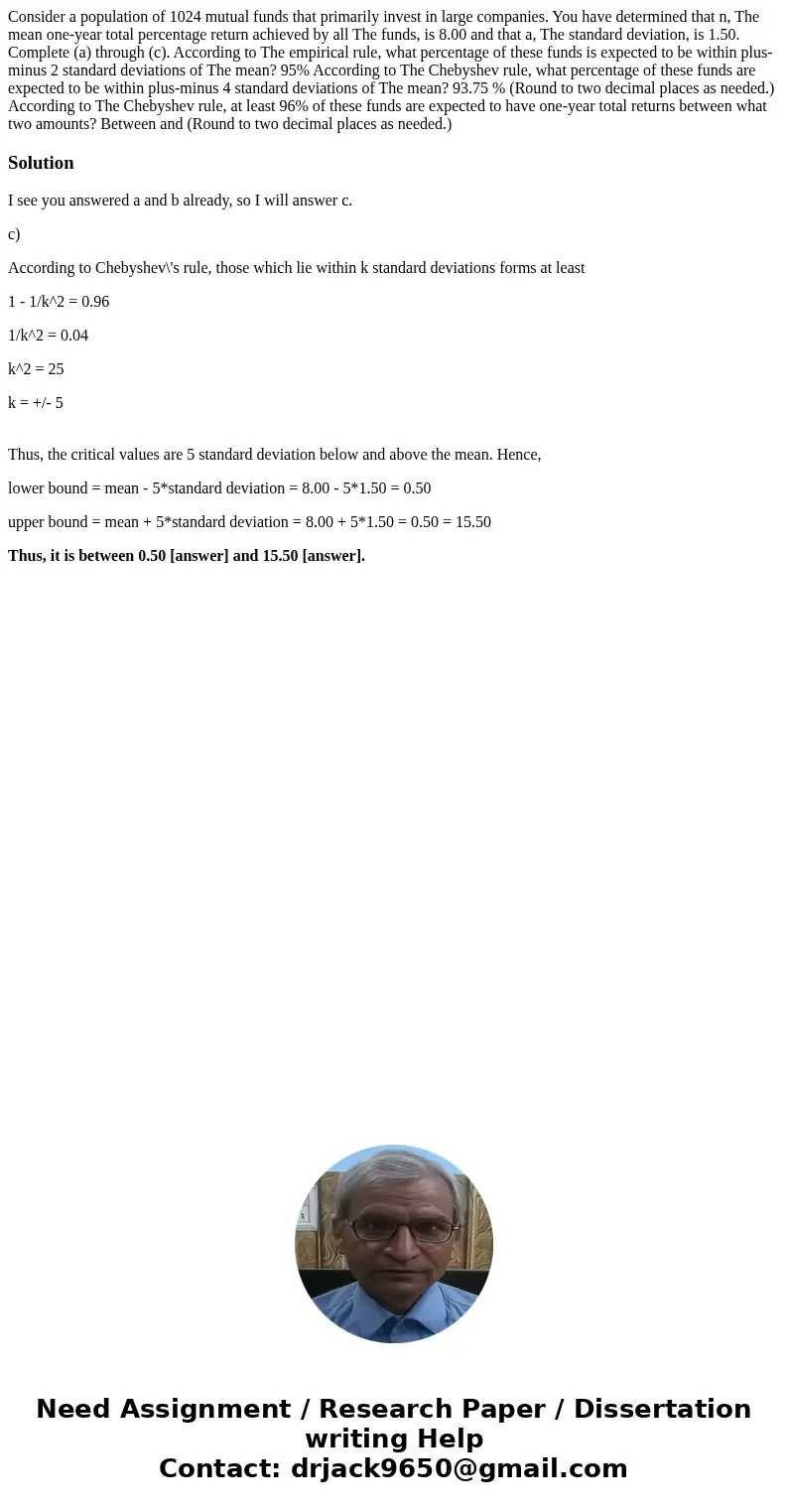Consider a population of 1024 mutual funds that primarily in
Consider a population of 1024 mutual funds that primarily invest in large companies. You have determined that n, The mean one-year total percentage return achieved by all The funds, is 8.00 and that a, The standard deviation, is 1.50. Complete (a) through (c). According to The empirical rule, what percentage of these funds is expected to be within plus-minus 2 standard deviations of The mean? 95% According to The Chebyshev rule, what percentage of these funds are expected to be within plus-minus 4 standard deviations of The mean? 93.75 % (Round to two decimal places as needed.) According to The Chebyshev rule, at least 96% of these funds are expected to have one-year total returns between what two amounts? Between and (Round to two decimal places as needed.)
Solution
I see you answered a and b already, so I will answer c.
c)
According to Chebyshev\'s rule, those which lie within k standard deviations forms at least
1 - 1/k^2 = 0.96
1/k^2 = 0.04
k^2 = 25
k = +/- 5
Thus, the critical values are 5 standard deviation below and above the mean. Hence,
lower bound = mean - 5*standard deviation = 8.00 - 5*1.50 = 0.50
upper bound = mean + 5*standard deviation = 8.00 + 5*1.50 = 0.50 = 15.50
Thus, it is between 0.50 [answer] and 15.50 [answer].

 Homework Sourse
Homework Sourse